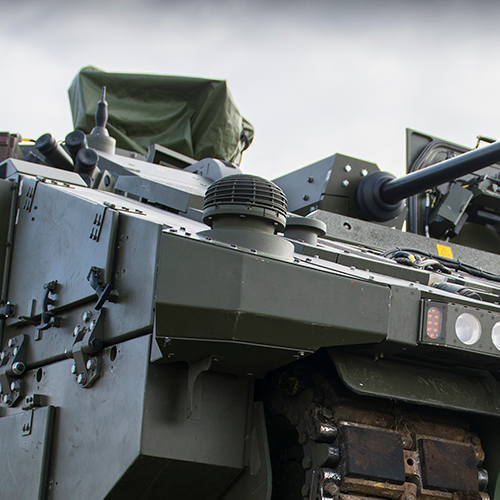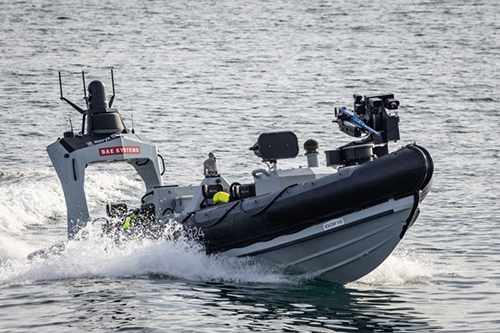Acusonic gunshot detection system leaves other systems in its wake
Thales’s Acusonic gunshot detection system overcomes an established weakness in similar systems on the market by removing its reliance on picking up muzzle blast to provide accurate bearings onto hostile firing positions.
As a result, Acusonic, whether in stand-alone or fully integrated mode, has been proven to provide accurate bearings to firing positions from moving platforms on land and at sea.
Increasing situational awareness and safety

Experience from Iraq and Afghanistan showed the difficulty faced by vehicle mounted crews in detecting incoming fire or its point of origin, due to engine noise and limited visibility.
A need was identified for an effective system that could detect hostile small-arms fire aimed at the vehicle, and the firing point, without soldiers leaving the safety of their vehicle. Acusonic, the solution from Thales, has been selected for both the British Army’s Ajax armoured fighting vehicle and Boxer mechanised infantry vehicle programs.
In common with other systems, Acusonic uses sensor arrays to capture the acoustic profile of a supersonic round. Sensors mounted on the vehicle pick up the shockwave of supersonic projectiles, from small arms to 30mm cannon shells, passing within 50m, and operators are presented with a hostile fire alert within 0.5 seconds.
Due to the conical shape of the shockwave, algorithms can calculate two possible solutions for the firing position bearing, approximately 120-140 degrees apart. If the sensors also pick up the muzzle blast of the weapon fired, algorithms can compare it with the shockwave to indicate an accurate firing position range and bearing.
While this works in perfect conditions, military platforms operate in the real world, on the move and in hostile conditions. The muzzle blast is rarely picked up due to a number of factors, including distance from the shooter, weather and, most significantly, masking by vehicle noise. The best that alternative systems can offer in these conditions is to issue a sector alert – danger from the front, rear, to the left or right.
A unique solution to the Achilles Heel of gunshot detection systems
Unlike every other acoustic based product on the market today, Acusonic does not rely on picking up the initial muzzle blast in order to provide an accurate bearing to the firing position.
Acusonic’s patented algorithm distinguishes the correct solution from the two possibilities by using a third acoustic profile of the round in flight – its wake.
“Through clever software algorithms, we can combine the round’s wake with shockwave information to distinguish and present an accurate bearing to the operator, no matter the conditions or whether they are on the move,” said Tom.
Maritime and autonomous applications

While Acusonic was initially developed for land vehicles, its’ performance in real world conditions also makes it effective in the maritime domain, particularly for special forces operating in littoral or riverine environments where hostile firing positions may be concealed. There is also a need for the remote operators of unmanned platforms, on land and at sea, to be able to detect when their platform comes under fire.
Already proven on land, in August 2019 Acusonic was fitted to BAE’s P950 Unmanned Surface Vessel for a successful live-fire proof of concept trial for the Royal Navy. As a result, Thales UK has delivered the Acusonic system to BAE on its Autonomous P24 platform which has recently undergone trials with the Royal Navy.
Simple stand-alone or integrated solutions
For new build programmes where Acusonic can be designed in from the start, Thales offers a solution which is easily integrated into a platform’s selected command and control (C2) software and Human Computer Interface (HCI), unlocking extra capability such as the slew to cue of remote weapon stations.
In addition, Acusonic’s stand-alone, plug-and-play capability is easily and quickly retro-fitted onto any platform. This approach utilises existing cabling channels and vehicle power, requiring only physical mounts for sensors, a handheld or mounted tablet device displaying output to the users and, where required, a navigation unit.
“Special and regular forces may be using a range of vehicles,” said Tom. “We can fit it onto the platform in two hours and it can be driven away with negligible downtime.”
Click for more information about Acusonic


